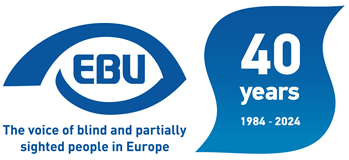By: Ing. Josef Sögner, Austrian Federation of the Blind and partially sighted (BSVÖ)
Learning and Outlook
The above mentioned Webinars for Acoustic Systems for Information and Navigation , held on the 10, 18 and 27 November 2020, brought together a wide variety of experts – both from Institutions within the EBU, but also developers from an organization for the visually impaired, as well as manufacturers, who have been working in that field for years, and thus have detailed knowledge of what the real needs of our communities are.
We have a long history of acoustic systems supporting visually impaired people in everyday life to a certain extent – depending on the complexity of components installed.
On the other hand we realised in recent years that our communities were asking for a more inclusive approach making “inclusion” a reality. As it turns out a Smartphone seems to be the first choice for nearly all offerings in that matter. This obvious choice does have a downside, as a fair share of blind and partially sighted people don´t have a Smartphone or are not fully able to use such a device.
Being aware of that, Okeenea (a French manufacturer) informed us of their solution. By means of a new device called “aBeacon” – an intelligent, acoustic box – and a remote control with Bluetooth, or an app on a smartphone, all known obstacles at complex crossings can be overcome, they claim. It is very important to note that this solution is designed to work with existing and older acoustic traffic lights from other manufacturers. This is a major aspect, because, as we all know, limited budgets are the main reason for slow progress in achieving “inclusion” for blind and partially sighted people.
This is one example how a solution from one country – France– is able to offer a path for more inclusion throughout Europe. Existing components with national standards in use for decades do not seem to offer a path to the future. Basing things on an industry standard – e.g. Bluetooth – rather than national or European Standards might be a promising approach for the future.
Adding more and improved features to existing acoustic components doesn´t sound as expensive as starting from scratch. We learned further on that specific navigation apps for the blind and partially sighted people are available – both outdoor (GPS-based) – as well as indoor (beacon based).
Products have been developed for public transport services – both a solution depending on a one system supplier (Swiss Federation of the Blind and Visually Impaired with Trapeze) and an independent solution working with every system supplier for public transport services (Geomobile). The big difference is: the price! Therefore we see a very slow pace of buses and trams introducing the solution of Geomobile in Germany.
The masterpiece, a seamless journey from door to door, hasn´t yet been made possible, but the solutions necessary for this endeavour are available. Again, cooperation amongst various manufacturers might be the only solution in order to keep development costs down and therefore make installation costs feasible.
To sum up, there is a very obvious conclusion, which we may lose sight of in daily business:
The urge is local, the solution is European (even worldwide)!

